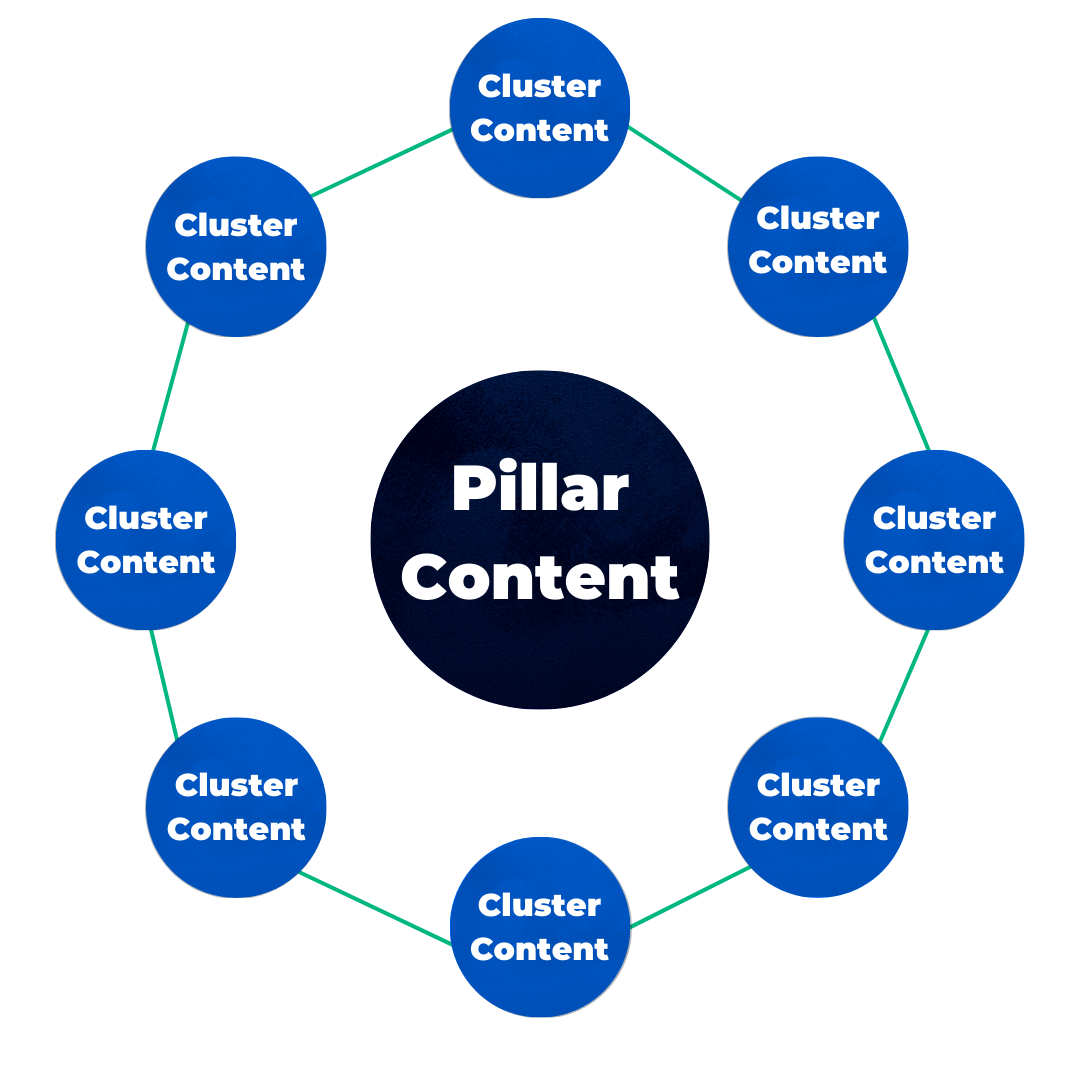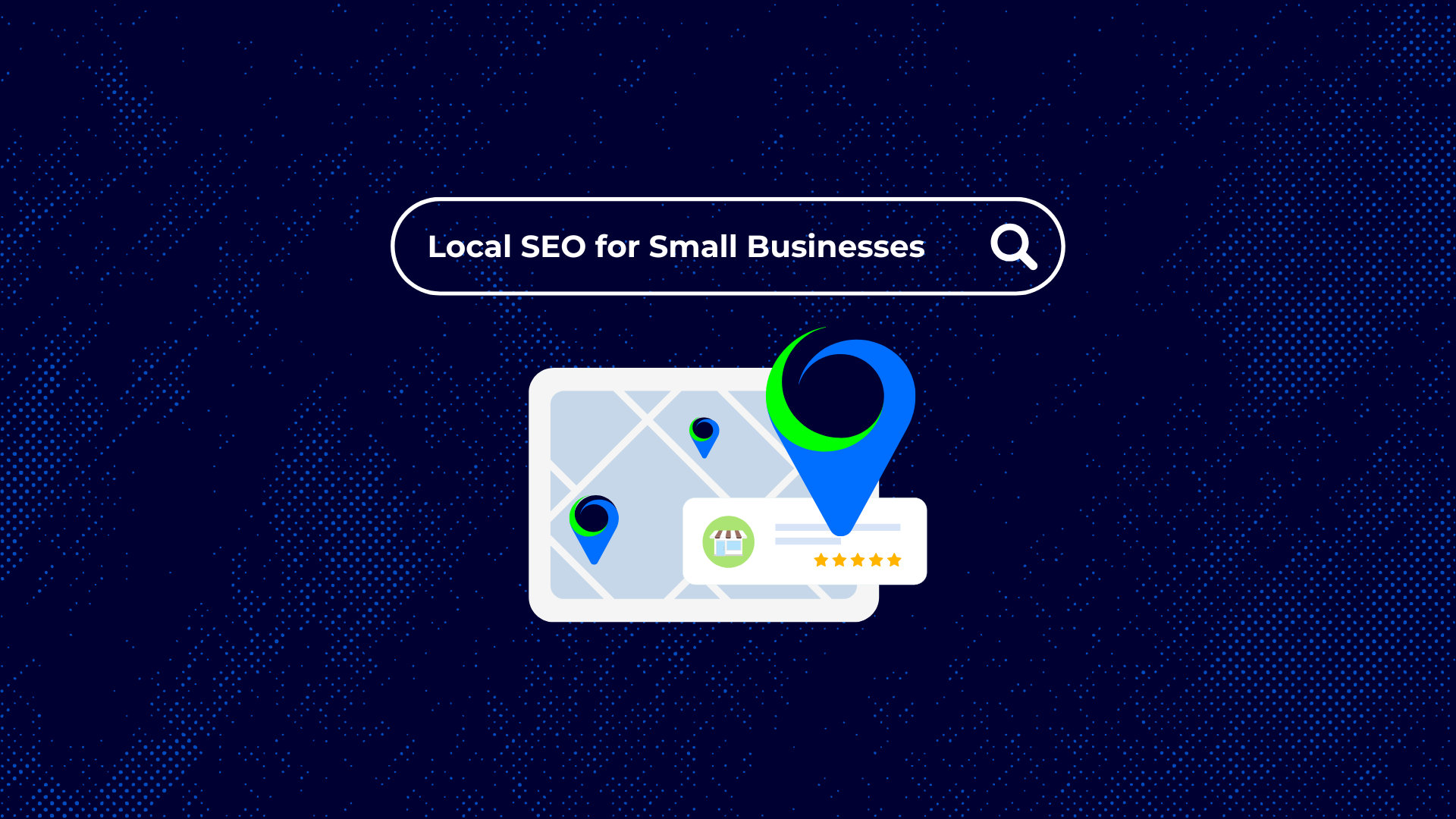The Ultimate Guide to Local SEO for Small Businesses (2025)
Getting found by local customers online isn’t some magic trick, it’s about making sure your business shows up when people nearby are searching for...
Got a question, or need help with something?
A member of the LoudLocal team is on hand to help you.
The Brickyard, Unit 2, Queen's Rd, Kenilworth, Warwickshire, CV8 1JQ
5 Merchant Square, Paddington, London, W2 1AY
An In-depth Guide to Increase SEO (Search Engine Optimisation) and Online Visibility with Topic Clusters
A team-produced guide, written with contributions from Tanya, Leon, Amelia and Michael.
In the ever-evolving digital marketing landscape, staying ahead of the curve is crucial for businesses looking to thrive in 2024 and beyond. One strategy that has gained immense traction and is poised to dominate the SEO scene is the use of topic clusters. If you've been wondering what topic clusters are and how they can revolutionise your business's SEO efforts, you're in the right place.
In this article, we'll delve into the concept of topic clusters, explore their numerous benefits for SEO, and explain why they should be at the forefront of your business's digital marketing strategy in the coming year. Get ready to supercharge your online presence and drive organic traffic like never before as we unlock the power of topic clusters!
Topic Clusters are groups of content that are all related to a specific topic. Topic clusters can be divided into three core parts:
1. Core Topics: The core topic is the umbrella under which the clusters are, for example, a topic could be SEO, and linking to this there could be a variety of articles or pages relating to this. A pillar page is the main page relating to the topic and acts like a directory to all the other topic subpages, providing internal linking for users to easily find the relevant information.
2. Clusters: Clusters are the individual pages relating to the core topic, these tend to be more focused and more specific than the core topic pages. When creating cluster pages it’s important to look at every aspect of the original core topic and what visitors to your site are looking for in their searches.
3. Internal Links: Linking between pages is the most important aspect of topic clusters as this is how the clusters are connected to the main pillar page as well as each other. Internal links are hugely beneficial for SEO in general on your site so should be included wherever possible.

Topic clusters improve internal linking by organizing content around a central pillar topic or theme.
Whilst very similar, there are some distinct differences between the two. A topic cluster is a content strategy that focuses on creating a central piece of content surrounded by related subtopics to establish authority on a specific subject, while a category is an organisational structure used to group and display content on a website, helping users navigate and locate content based on broader topics or themes. Topic clusters can be used within categories to create a more organized and authoritative content structure on a website or blog.

Topic clusters, also known as content clusters, refer to collections of webpages strategically organized to establish expertise and authority in a specific subject, especially from the perspective of search engines.
Creating content clusters requires a brand-new approach to your content and SEO strategy. If you already have an SEO strategy in place, then a lot of the principles remain the same. Keyword analysis remains as important as ever, but, you will be relieved to hear that it isn't your previous approach to SEO
Begin by looking at your existing content, this will help to give you a good idea of what topics you already cover and how well they are performing, it will help provide a template for new clusters you want to make. It will also help you understand what clusters you might already have without realising so it’s important to start by getting everything organised and understanding what fits together. This can also be a good opportunity to update and refresh any old content across the site.
Keyword research will allow you to identify what areas you should target when choosing your topics as you will be able to determine what keywords have a high traffic volume, as well as compare them to competitors and see how well they rank for specific search terms.
By using your keyword research you should now be able to choose a relatively broad topic - something with high search volume but relatively low competition will be a good choice in terms of SEO. When deciding on a topic for your pillar page you think about whether it's broad enough for you to be able to link this to multiple cluster pages to it; if not it may be worth considering a slightly broader area. Once you have chosen your topics, you will then need to work out what subtopics you will want to target.
Once you've decided on the subtopics for your cluster pages, it's time to start making the content. When doing this it is important to think about producing high-quality content that will demonstrate your knowledge of your chosen field. Within the cluster pages it's important to include links back to the pillar page as well as between the cluster pages, the links between each level are what differentiates clusters from categories.
In this basic example of a topic cluster for a home electronics company, we illustrate the hierarchical structure of content and the internal links, indicated by arrows. The central theme in this instance is 'TVs,' and the cornerstone content comprises key pillar pages identified through keyword analysis. Subtopics are linked keywords, that are also relevant to the overall pillar page.
There are many benefits to creating topic clusters, but some of the key advantages are focused on creating a better customer experience, demonstrating topical authority and the beneficial impact on SEO efforts.
Topic clusters convey a strong and distinct message to search engines, delivering a concentrated and cohesive perspective on a specific topic. This ensures that all content within the cluster remains closely aligned with its central theme, which holds significance for both users and search engines alike.
By showcasing this topical relevance, your website will draw the appropriate audience and effectively signal the search space in which you aspire to achieve a higher ranking.
It shows search engines that you are trustworthy, authoritative, and an expert.
Internal linking within topic clusters helps guide users through a structured content journey while reinforcing the authority and depth of information on the chosen subject matter. This avoids having individual, disconnected articles that are difficult to navigate from a customer perspective.
Topic clusters help establish credibility in specific topics by showcasing a website's expertise and authority through comprehensive, interconnected content. When users encounter a well-organised cluster of in-depth information, it reinforces the website's reputation as a reliable source within that niche. This credibility-building effect attracts more visitors and fosters trust, ultimately solidifying the website's position as a respected authority on the topic.
Search engines recognise the website as a valuable resource with comprehensive information on a particular topic. This signals relevance and authority, boosting the website's chances of ranking higher for keywords associated with the chosen topic.
Topic clusters are a simple way to improve your site's architecture and page hierarchy, which will in turn help lead to better SEO (Search Engine Optimisation). This is because by creating clusters you are effectively grouping relevant content together, this makes it easier to find for both users and search engines. By making information more easily accessible for search engines it means they can crawl and index your pages more quickly and accurately, making them more likely to appear higher in search results.
It can also benefit SEO by building authority for your site in a specific topic, as you will have more high quality and in-depth content that covers a whole topic. It ties in closely with Google’s EEAT guidelines that it uses to rank search results, it stands for Experience, Expertise, Authoritativeness, and Trustworthiness.
Internal linking is also an extremely important part of SEO and by incorporating topic clusters means these and included across your site naturally, linking all relevant pieces of content together.

We hope you enjoyed reading this article and found it useful. Our team will continue to expand and update this article over time, so why not bookmark it?
Why not check out our blog for further helpful tips on how to improve your business's organic performance on search engines?
If you need support with SEO, consider booking a call with a member of our team to learn how we can help you achieve your online goals.
Thank you for reading, and we look forward to seeing you again soon.
Best regards,
The LoudLocal Team 😊

Getting found by local customers online isn’t some magic trick, it’s about making sure your business shows up when people nearby are searching for...

Running a small business is a full-time job in itself, and finding time for social media can feel like an extra task on the list. But here’s the...

Running a trades business takes a lot of time and energy. You’re busy on site, chasing quotes, and keeping customers happy. But while you’re focused...

An in-depth guide discussing the value of zero-click searches. In this blog, we will be discussing: What are zero-click searches? How Important are...

An in-depth guide to increasing SEO (search engine optimisation) and online visibility with rich results.

Throughout 2024, as part of our calendar campaign, we have covered a variety of topics related to search engine optimisation (SEO) and what we felt...